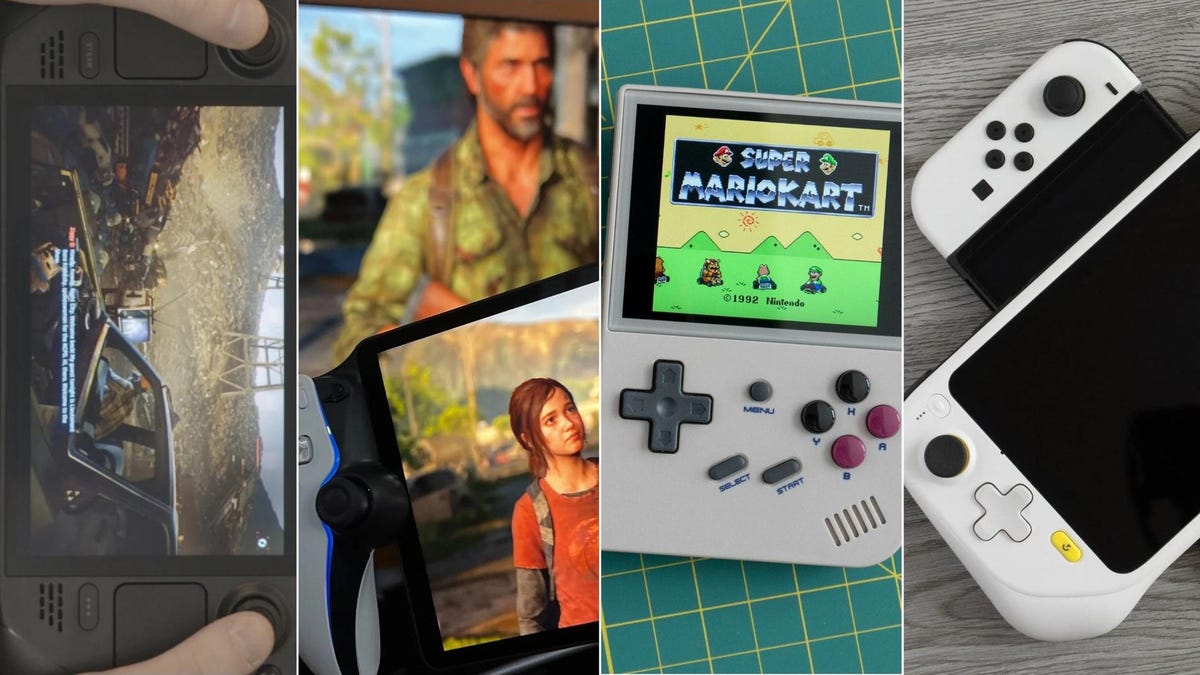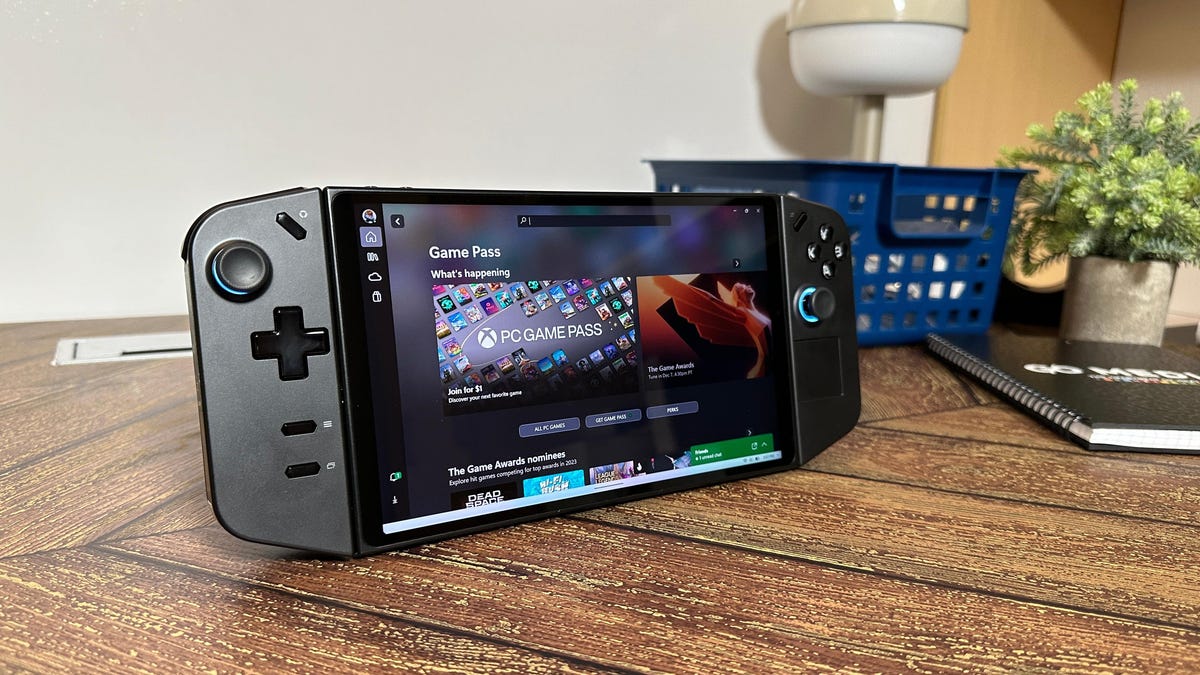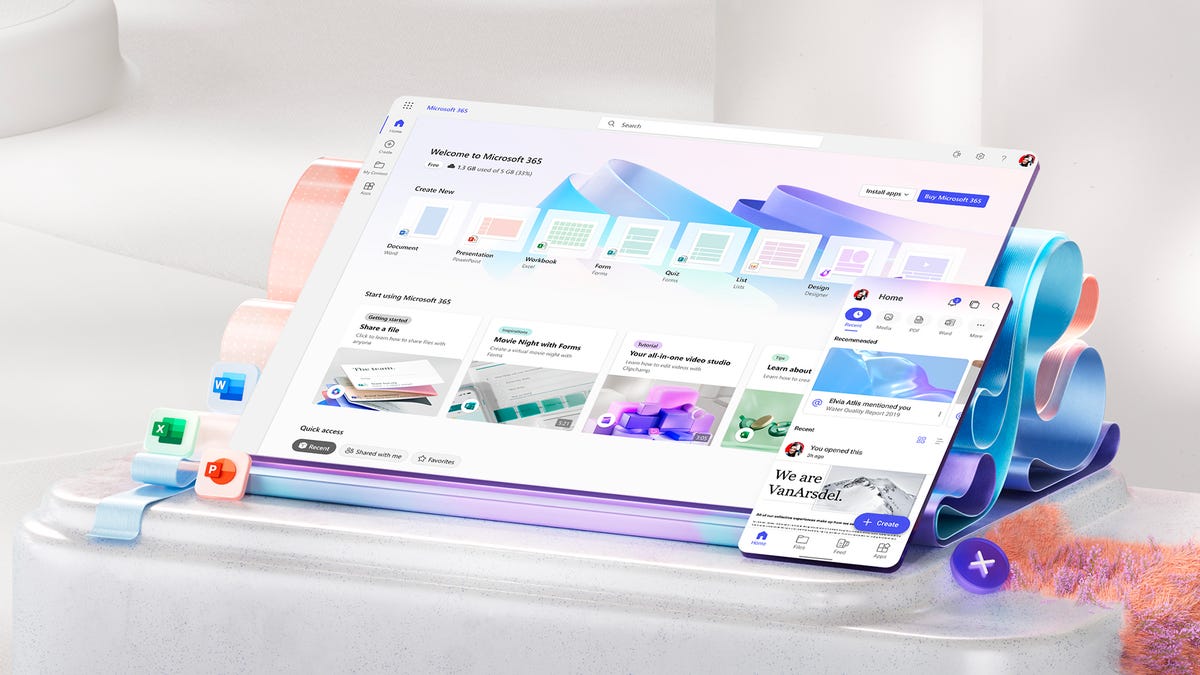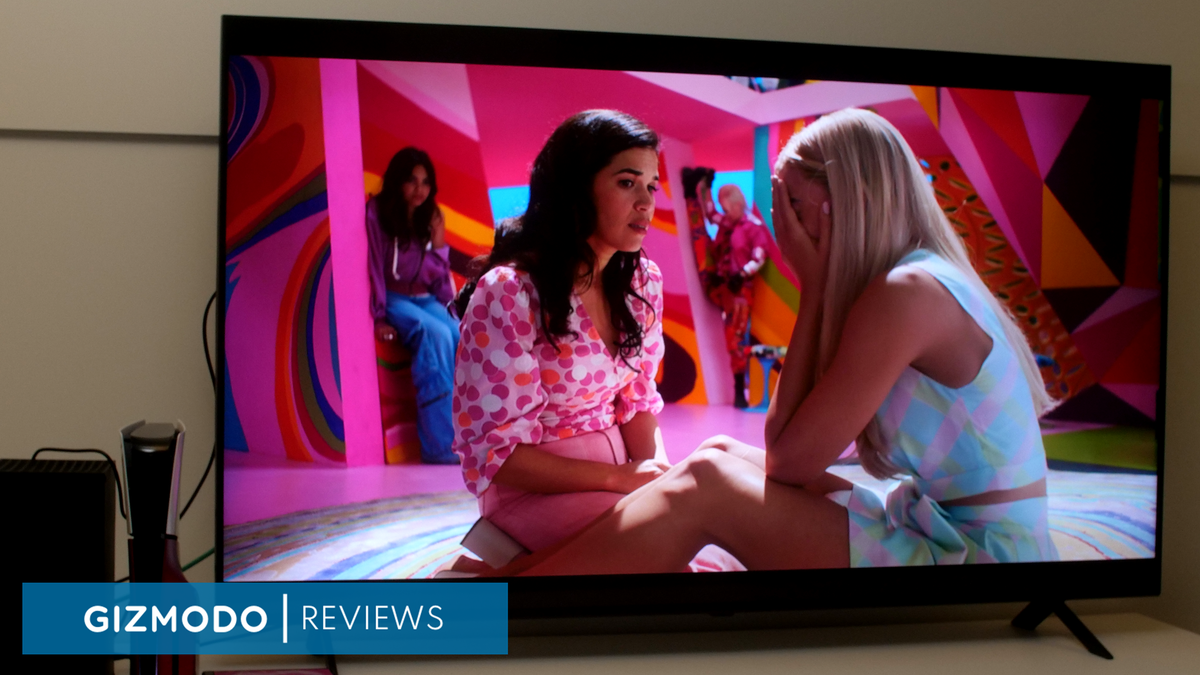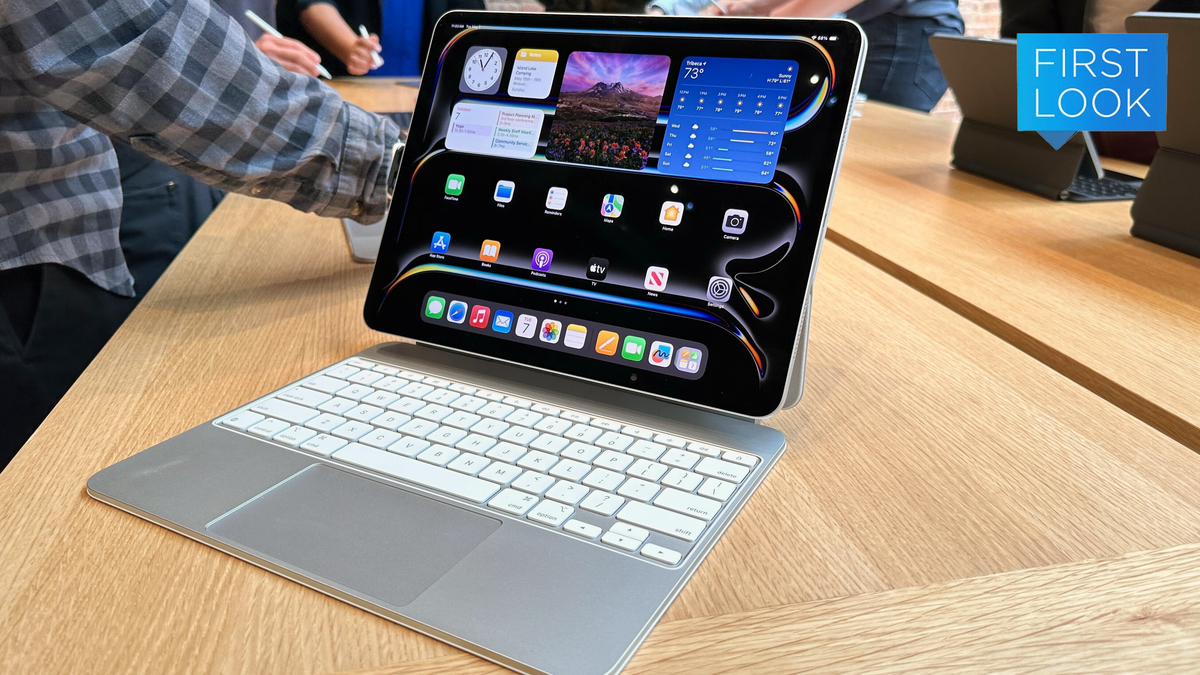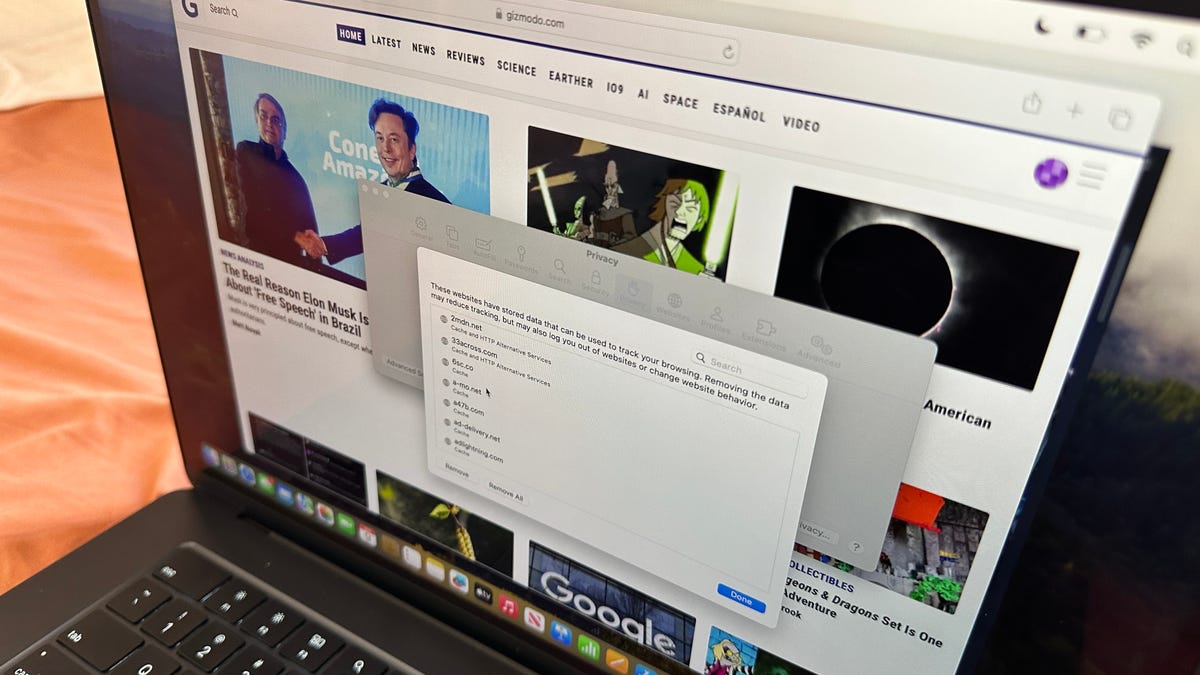This past year was a tipping point for the games industry. There have been some amazing, trend-setting releases alongside devastating industry turmoil, including mass layoffs, studio closures, and ballooning development costs. There’s a sense of foreboding entering into 2024, but there’s at least one thing we can glean from the chaos of 2023. The handheld console proved to be the hottest and best way to play games on the go or at home. The new portable paradigm has the ability to save the games industry from heartbreak, so long as the major publishers and console makers buy-in.
The major game studios took the wrong lessons from the expansion of mobile gaming. They thought players really enjoyed paying through the nose for every feature drip, character skin, or mini-expansion. Really, it was about access. Most people had phones, ergo, most people would play games on their phones.
But 2023 proved a whole other reason why game sales on phones are still more than double all the other consoles and PCs. It’s portability. It’s ease of access. It’s customizability. Guess which popular systems have all that in spades? The Steam Deck and all its contemporaries in the handheld console market have made gaming and game development far more accessible, and all on screens that max out at 9 inches wide with less than 90Hz refresh rates.
Forget high-fidelity graphics that few but the most expensive gaming rigs can maximize the polygon count. This past year was about scalability, with fewer people asking whether their PC was expensive enough to run the hottest releases and more people wondering if the game could run well enough on their Steam Deck or Asus ROG Ally. CDProjektRed took advantage of this early and made Cyberpunk: 2077 run surprisingly well on Steam Deck, and they’re much better off for it.
Nintendo realized more than seven years ago that players don’t necessarily care as much about graphics as they do about how a game looks and feels. The Legend of Zelda: Tears of the Kingdom may be buckling under the Switch’s old hardware, but few would try to claim the game doesn’t look gorgeous thanks to its pastel color palette and subtle cell shading. That game sold 19.5 million copies globally, not including digital sales. With 125 million total Switch units sold over the past seven years, do you think Nintendo is really so aggrieved that its hardware isn’t top of the line?
While smaller developers have been making handheld PCs for years, it took us until the end of 2022 for major manufacturers to take the example from what was easily the most popular game console of the past decade. What’s more important is that now there’s a long-rumored Switch sequel on the horizon for 2024, and based on what little we’ve heard, the next console will keep the same portability as the company’s last-gen hardware hit.
Yet it was Valve who finally flipped the switch (pun intended) on the true portable console experience. At this point, the Steam Deck is more than just a “Switch Pro” or a mobile desktop with a screen. The Deck is its own device capable of accessing far more than your Steam library. Linux-based SteamOS is still annoyingly buggy, but emulation and plugins have proved equally versatile on Valve’s premiere handheld. Now that the OLED Steam Deck with more storage space has taken over the top-selling space on Steam, the new Deck-like craze won’t die down anytime soon.
And that’s a good thing because competition is key to this new market’s success. Major PC makers Asus and Lenovo both have their own first rendition of the handheld console, both with their strengths and weaknesses. Lenovo’s Legion Go is a beast in terms of power and overall heft. It has issues, mostly that it’s too damn big to be very portable for most folks, but it’s rather innovative with its Switch-like snap-off controllers and attempts to add an FPS stick for playing shooters on the go.
The ROG Ally is a strong contender with better performance at near-Steam Deck prices, but it only falters thanks to worrying MicroSD slot problems. We hope more big names plant their own stake in the 2024 console market. Dell’s Alienware brand showed off its UFO concept three years ago, and we’d love to see it resurface.
But you can’t forget all the minor players as well. Ayaneo has a whole new line of portable PCs that really tug at that nostalgia factor with the Sidekick-like Ayaneo Slide and “Little Mac” Retro PC AM01. Other manufacturers had been deep into this space years before Valve first came in. We need the market to blossom so that the biggest console makers can finally see the writing on the wall.
The Biggest Console Makers are Still MIA in Handheld Devices, and They’re Holding Everyone Back
We haven’t seen as big of a mobile gaming paradigm shift since the original GameBoy debuted in 1989. What’s clear is that while smaller companies are at least interested in the handheld form factor, the biggest console makers are still holding out.
While Xbox hasn’t made any peep about any handheld hardware, the tech giant Microsoft seems to be slowing down its console-making role altogether. Instead, the focus is on software, and it could prove a winning strategy. Microsoft and Xbox execs have pretty much declared they’re hedging their bets on Xbox Game Pass. The service is compatible with pretty much all Windows-based and Android-centric systems, which, at this point, comprise most of the handheld PC market.
Xbox head Phil Spencer has pretty much confirmed the Asus ROG Ally is his handheld of choice in an August interview with Eurogamer. The problem is Windows 11 is a real pain in the posterior on gaming handhelds. It’s been this way for a while now, and Spencer seems to know this, tweeting all the way back in June, “We are focused on making the Xbox and GP experience great on devices like the Ally… more to do.”
That “more to do” could be an actual working version of Windows designed first for handhelds. The company recently made very small modifications to facilitate handhelds on the Xbox App, but we desperately need something that will work to launch the major game platforms like Steam and Epic Games Store more easily. Something as simple as a better touch keyboard and UI scaling are still missing. It’s wild we’ve waited this long with little more than side chatter from Microsoft.
More than that, though, this year’s more disappointing handheld consoles, such as the Razer Edge and Logitech G Cloud, focused solely on cloud and Android gaming. Both these devices have to compete against smartphones, especially since smartphone controllers like the Backbone One are far cheaper than any full device. It goes to show that software will only take you so far, and Game Pass can’t solely make it work without solid, supporting hardware.
Sony had a chance to release some kind of handheld console in 2023, but the company squandered it with the perfunctory PlayStation Portal that misses out on access to cloud gaming. However, it’s not like this past year wasn’t a success. The company declared in December that the PlayStation 5 surpassed 50 million units sold, with 25 million units thanks in part to a late-year push with the slimmed-down PS5. It’s one of its best holiday seasons to date, and Sony told Reuters it’s already meeting sales expectations.
Now, there are rumors we’ll see a PS5 Pro in late 2024. So, for right now, Sony seems to be keeping clear of any PS Vita debacles, which is understandable for such a massive corporation. However, PlayStation runs the risk that Microsoft’s Game Pass and cloud gaming beta will come and eat its lunch.
There have been so many handheld releases this year it’s a bit hard to keep track. There have been a few winners and many losers in the portable market, but at least there are a few to pick from. Click through the slides to get a sense of just how many companies, both big and small, have tried their hand at handhelds, which might help us see just where we hope things might go in 2024.


